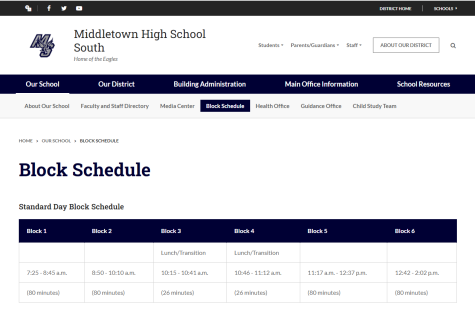Pipeline Prosperity

image courtesy of Google Images
December 16, 2016
 Is disrupting the progression of a nation worth protecting outdated cultural values? In June of 2014, the Dakota Access Pipeline, a $3.7 billion underground oil pathway stretching approximately 1,170 miles from North Dakota to Illinois, was announced. Recently, protests led by Native Americans of the Standing Rock Sioux Reservation have erupted against the proposal, instigating physical conflict between inhabitants of the encampment and local law enforcement officials. Jack Schaaf, a neighboring rancher to the Reservation where most of the demonstrations have occurred, stated that while he fully supports the right to peaceful protest, he has grown weary of “navigating a police checkpoint if [I] want to drive into Mandan for a pizza.”
Is disrupting the progression of a nation worth protecting outdated cultural values? In June of 2014, the Dakota Access Pipeline, a $3.7 billion underground oil pathway stretching approximately 1,170 miles from North Dakota to Illinois, was announced. Recently, protests led by Native Americans of the Standing Rock Sioux Reservation have erupted against the proposal, instigating physical conflict between inhabitants of the encampment and local law enforcement officials. Jack Schaaf, a neighboring rancher to the Reservation where most of the demonstrations have occurred, stated that while he fully supports the right to peaceful protest, he has grown weary of “navigating a police checkpoint if [I] want to drive into Mandan for a pizza.”
Not only have recent demonstrations conducted by Natives disrupted daily life for nearby residents, but they are also stunting the application of major national benefits and the expansion of local economic interests, proving their widespread distortion rather than productivity.Although nonviolent protest is completely justified via basic Constitutional rights, tenants of the Standing Rock Sioux Reservation have provoked violence in opposition against the development of the Dakota Access Pipeline. Schaaf and other townspeople claim that “strangers have walked onto [our]property to videotape [us] or have stolen hay from [our] pastures.” By blatantly disregarding the privacy of surrounding people, the Natives are not protesting in a peaceful manner and instead are knowingly breaking laws in order to convey their feelings about the proposed pipeline. One unidentified rancher claimed that while he was driving his tractor to his field, a group of masked men on a rural county road attempted to approach him.
Obviously, this is not a race issue, but instead it is problem revolving around a group of individuals who feel threatened by the potential environmental harm that may be commenced by the introduction of the pipeline, along with those who feel a sacred connection to the land and refuse to part ways with it. Sheriff Kyle Kirchmeier warned that a few of his officers had been intimidated with pipe bombs, in addition to violence that spurred from a supposed attack conducted by angry protesters against pipeline contractors. At this point, anti-pipeline advocates are simply initiating chaos to disrupt the construction of a nationally pivotal pipeline rather than peacefully demonstrating their side of the spectrum. Benefits that accompany the institution of the Dakota Access Pipeline are recognized most significantly on a national level.
If its final construction is approved, the pipeline will be capable of transporting nearly 500,000 barrels of crude oil per day, contributing towards greater energy independence for the United States. Now, many pipeline critics claim that its structure is not reliable enough to support an influx of crude oil and that the pipeline intrudes upon spiritual Native land, both of which are illegitimate statements. According to statistics from the United States Department of Transportation, modern pipelines utilize advanced technology and monitoring systems to ensure maximum safety. Also, technically speaking, the pipeline does not cross any legal boundaries belonging to the Standing Rock Sioux, thus disproving the claim that it would unjustifiably interfere with sacred Native burial grounds. Is it not a bit absurd that individuals value deceased cultural figures over the well-being of our current society, even when the graves of the aforementioned personalities are not being impeded upon? This personally sounds like utter selfishness on the part of Natives defending the pipeline’s abolishment.
Not only does the Dakota Access Pipeline contain national advantages, it also carries potential conveniences for the local economy. During its construction, the pipeline would generate a total of 8,000 to 12,000 jobs for welders, mechanics, electricians, pipe fitters, heavy equipment operators, and many others. In total, local and state revenues are estimated to receive a $156 million in sales and income taxes due to the pipeline investment. It is also estimated that the proposed pipeline will generate $55 million annually for services to support schools, roads, emergency facilities, and more. North Dakota governor Jack Dalrymple and other state officials have expanded upon the potential economic benefactors, claiming that “the [pipeline] will not only assist in progressing the local economy, but it will also aid economies along the route through the use of hotels, restaurants, and other services.”
Ultimately, the Dakota Access Pipeline is a transportation method for crude oil that will have numerous other incentives. Along with allowing almost 500,000 barrels of oil to be sent from North Dakota to Illinois daily, the pipeline will provide the local economy with a boost as well as increasing the nation’s energy production, all while operating under perfectly legal confines. Although the future of the Dakota Access Pipeline is currently up in the air, construction of the pipeline must continue for the greater good of modern society and for future generations residing within the United States.










